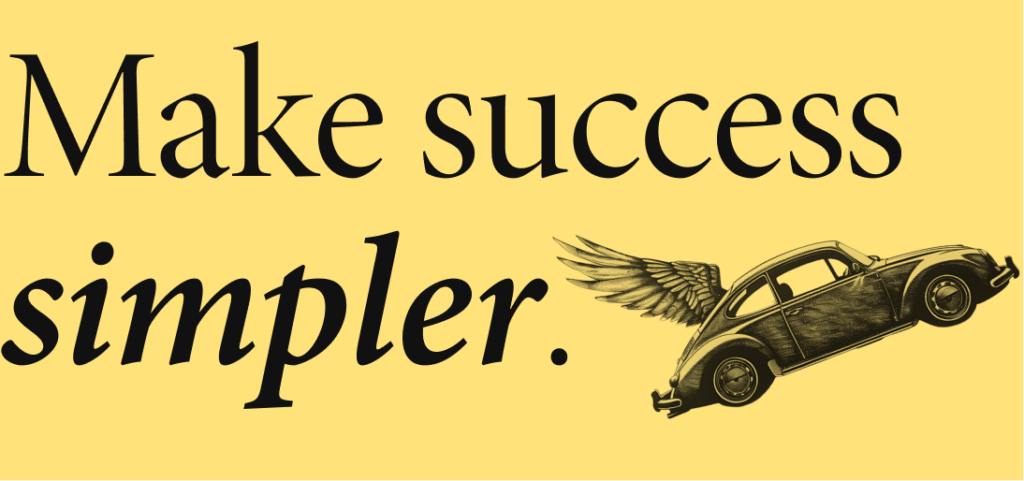Welcome to One Thing Better. Each week, the editor in chief of Entrepreneur magazine (that’s me) shares one way to be more successful and satisfied — and build a career or company you love.
Hello! I was on a family vacation last week, with no time to write. So today, I’m sharing one of my favorite editions from last year.
Today’s one thing: Solving your big problem.
That one thing, better: Identifying your real problem.

You’ve got a problem.
Something isn’t working. Something seems broken. You’re frustrated — and you have no idea how to fix it.
In times like these, I like to step back and ask a question:
“What problem do I actually have?”
Because here’s the thing: When we can’t find a solution, it’s often because we’re trying to solve the wrong problem.
Today, I’ll help you find the problem you actually have — by distilling it down to one simple word. Then we can find a solution that actually works.
Let’s start with an example.
A young professional recently came to me with a problem. He works at an advertising agency, and his ideas are always getting shot down. He’s frustrated, demoralized, and can’t figure out what’s wrong.
“Should I just start executing my ideas without asking permission?” he asked me.
This would be an act of desperation, but he sees no other choice. He believes in his ideas. Nobody’s giving him a chance. So maybe he just… spends some time and money, and proves himself that way?
To which I said: Hold up there.
The problem is, he doesn’t actually know what problem he has. Which means he can’t find the right solution.
And that’s the most common problem of all.
You need a “one-word problem.”
Consider this: Even if your problem feels very big, what if it’s actually very small?
That’s not to say it’s simple or unimportant. It’s just to say, it’s specific. Problems often feel big and abstract, and they radiate outward. We spend a lot of time trying to solve for the symptom of the problem, rather than locating the actual problem itself.
So let’s focus. You should be able to take your problem, and fit it into this MadLibs-style sentence:
“I don’t have a ______ problem. I actually have a ______ problem.”
And how do you do that?
Let’s go back to the young man at the advertising agency.
Nobody accepts his ideas — so right now, we might say he has an “acceptance problem.” That’s a big, abstract problem that’s hard to solve.
But wait. He’s never tested whether that’s his actual problem.
So, it’s time for:
Step #1: Create some hypotheses.
Break out all the potential problems you’re facing — write down any realistic, untested, possible versions of your problem. For example, I presented the advertising guy with a few.
What if, instead of having an acceptance problem, he really has a…
- Ideas problem: He thinks his ideas are good, but they are bad.
- Seniority problem: His team doesn’t value junior people’s ideas.
- Vibe problem: He’s part of a team that doesn’t value his type of ideas.
- Communication problem: His ideas are good, but he’s bad at communicating them.
- Collaboration problem: He’s going it alone, while his colleagues collaborate to get more buy-in from the team.
Now he has five possible problems to test. Write them all down, I said.
Step #2: Experiment!
Run tests to see which problem you actually have. Because each version of this problem comes with its own unique solution.
Some problems are easy to test. For example, with the ad guy: The “seniority problem” is easily testable. He can think back — are other junior members of the team being rejected, or are their ideas getting through?
But many of these hypotheses will require effort. The “communication problem” is a big one. Maybe his ideas are great but also complicated — so when he describes them in meetings, nobody understands him. If that’s the case, what can he do instead? Make sketches? Quick mock-ups? He should test this out.
Perhaps this sounds exhausting. But it should sound liberating. Beforehand, this advertising guy only saw the symptom of a problem: Nobody listens to him! Therefore, he’d come up with a high-risk solution — to spend time and money executing ideas without permission, and probably pissing off his boss.
But now he has a lot of potential solutions, and they are all much more reasonable to test.
One day, he can finally fill out the Mad Libs. Maybe it’s this:
“I don’t have an acceptance problem. I actually have a communication problem.”
Along the way, of course, he (and you!) should also ask others for input. He could approach his boss and say: “Hey, I’m having trouble getting my ideas through, and I came up with a couple of potential solutions. What do you think about these?” That’ll start a helpful conversation.
Now, apply this thinking everywhere.

Are you in a struggling relationship? Step back and ask: “Do I have a relationship problem, or a…”
Now what is it? Communication problem? Lifestyle problem? Jealousy problem? Something else? Maybe there’s something specific to solve for, without having to blow up the entire relationship.
Are you unhappy at work? Step back and ask: “Do I have a job problem, or a…”
Now what is it? Manager problem? Responsibilities problem? And so on.
I remember once interviewing Jason Robins, the founder of DraftKings, about an existential problem his company faced: Multiple states were threatening to change their gambling laws, which would have put DraftKings out of business.
This seemed like an existential problem. But how do you solve for that!? So he stepped back and basically asked: What problem do I actually have?
“It’s really no different than figuring out how to build a product that people want,” he told me. “It was: This is the problem we’ve got to solve. And all of a sudden, you know what you’re doing.”
In DraftKing’s case, Robins realized he had a relationships problem. DraftKings had no relationships with lawmakers, which meant no open dialog or opportunity to create common ground. So they invested in lobbyists, started meeting with local officials, and ultimately helped craft laws that made lawmakers happy but kept DraftKings in business.
Your problems are real. They are hard. They drain your time and energy. But they are not everything, and they are not everywhere. They are contained. Identifiable. Solvable.
But you will not get there until you can name them. Until you know what you’re dealing with. Until you can boil your problem down to a single word, something you can hold in your hand, something you can look at and say: I see it. And I can fix it.
That’s how to do one thing better.
